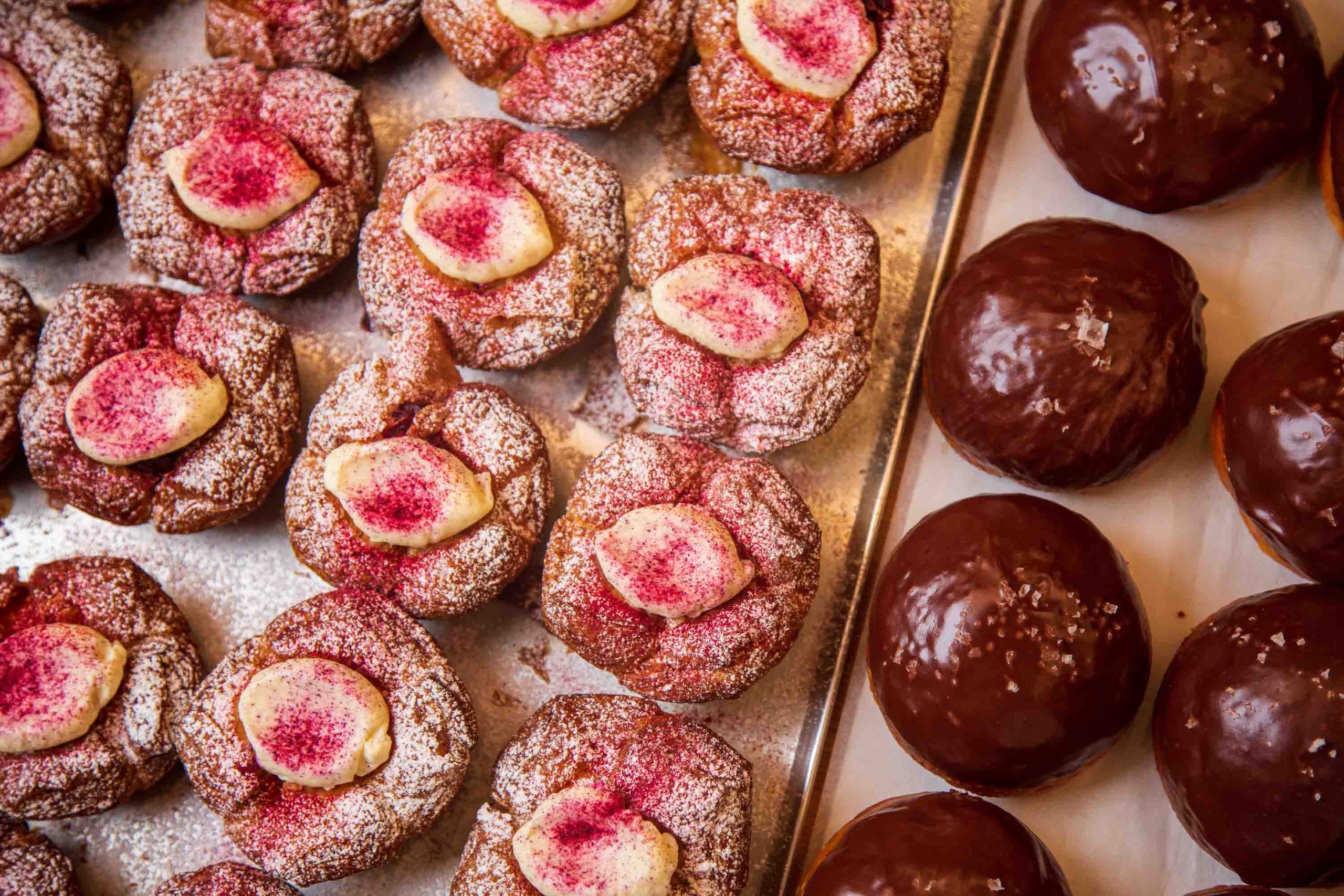
Everyone loves a flaky Danish pastry, but why exactly are these treats so universally loved? Pooja Shah has a sweet time in Copenhagen finding out.
As a New Yorker and a recent London transplant, I’ve often avoided baked goods because of the American perception that it was ‘unhealthy’. I grew up around fashion magazines and media defaming sugar and baked goods; instead, I worshipped intermittent fasting, green smoothies and over-exercising. Breaking out of the mindset that eating a dessert or sugary item does not need to be earned—or calorically burned— has been a personal struggle.
But maybe I’m about to change my tune… It’s the aroma that hits me first—a warm, inviting blend of buttery pastry and fragrant cinnamon wafting from the cozy bakery in the heart of Copenhagen. I step inside Lagkagehuset, greeted by a tempting display of freshly baked kanelstang, a classic Danish pastry that best translates to ‘cinnamon stick’, behind the glass counter.
I scan the selections, tempted to order them all. I restrain myself and focus on the baker delicately twisting the kanelstang’s flaky dough into a long, spiral shape before handing a baked one to me. The golden-brown crust has a sheen of glaze, and ribbons of cinnamon sugar wind their way through the layers… my mouth is watering.
“Bread is one of the staples of human history which has been around forever,” explains Chiara Barla, curating partner at Copenhagen bakery and café Apotek 57, inside Copenhagen’s Frama Studio Store. “With the global fascination over Noma, deemed one of the world’s best restaurants, it created a renaissance that attracted many talented chefs to provide their culinary expertise.”
Noma has a lot to answer for, in a good way. The restaurant and its founder, René Redzepi received international recognition and numerous Michelin stars for creating new Nordic cuisine and inspiring chefs to develop new flavors and experiment with gastronomic limits. As a result, chefs from around the world were attracted to innovating and rethinking bread and baked goods.
But they soon realized that while there was an influx of restaurant industry professionals from the UK, US, Italy and other parts of Europe, there was a lack of traditional restaurants that they could work in—they needed to steer away from restaurant business and instead, open bakeries to satisfy the growing sweet tooth in the country.
If you analyze the makeup of a Danish pastry, you’ll note these intricate, flaky treats are different from the typical baked goods found in comparable American bakeries. At the core of Danish pastries, spices such as cinnamon and ingredients like pastry cream are signature components. Other notable ingredients in Danish pastries are butter, dough, almonds, a whipped cream or custard, and according to Richard-Carvajal, a big spoonful of nostalgia.
“There’s a bun for every occasion,” jokes Richard-Carvajal. “There’s a deep connection between culture and food, especially baked goods in Denmark, and it’s a country that empowers you to enjoy a conversation with a colleague, friend or family member over a shared treat.”
During my Copenhagen sojourn, my friend and I sit in many a sun-dappled café, unearthing layers of our friendship and bonding over freshly baked tebirkes, marzipan-filled pastry topped with poppy seeds. And when I see the long queues snaking outside every bakery, no matter the hour, I realize one thing is abundantly clear: The Danish pastry is a part of this country’s culinary heritage that refuses to be supplanted by passing fads or trends.
Back at Lagkagehuset, the ribbons of cinnamon sugar melt on my tongue with each bite, and I can’t help but dab at the corners of my mouth, savoring every last trace of sweetness. In that moment, it all became clear: This isn’t just a baked good or a pastry, but a symbol for pure, unadulterated joy.

